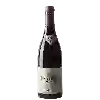
Winery Henri et AymardAloxe Corton
This wine generally goes well with poultry, beef or veal.
Food and wine pairings with Aloxe Corton
Pairings that work perfectly with Aloxe Corton
Original food and wine pairings with Aloxe Corton
The Aloxe Corton of Winery Henri et Aymard matches generally quite well with dishes of beef, veal or game (deer, venison) such as recipes of tibs (ethiopia), country-style veal roulades with risotto or duck aiguillettes.
Details and technical informations about Winery Henri et Aymard's Aloxe Corton.
Discover the grape variety: Maréchal Foch
Maréchal Foch noir is a grape variety that originated in France (Alsace). It is a variety resulting from a cross of the same species (interspecific hybridization). It produces a variety of grape specially used for wine making. It is rare to find this grape to eat on our tables. This variety of grape is characterized by small bunches and small grapes. The Maréchal Foch noir can be found cultivated in these vineyards: Provence & Corsica, Rhône Valley, Languedoc & Roussillon.
Informations about the Winery Henri et Aymard
The Winery Henri et Aymard is one of of the world's greatest estates. It offers 2 wines for sale in the of Aloxe-Corton to come and discover on site or to buy online.
The wine region of Aloxe-Corton
The wine region of Aloxe-Corton is located in the region of Côte de Beaune of Burgundy of France. Wineries and vineyards like the Domaine Maillard Père & Fils or the Domaine Michel Gay & Fils produce mainly wines red and white. The most planted grape varieties in the region of Aloxe-Corton are Pinot noir, Chardonnay and Pinot gris, they are then used in wines in blends or as a single variety. On the nose of Aloxe-Corton often reveals types of flavors of cherry, vegetal or vanilla and sometimes also flavors of licorice, plum or pepper.
The wine region of Burgundy
Bourgogne is the catch-all regional appellation title of the Burgundy wine region in eastern France ("Bourgogne" is the French name for Burgundy). Burgundy has a Complex and comprehensive appellation system; counting Premier Cru and Grand Cru titles, the region has over 700 appellation titles for its wines. Thus, Burgundy wines often come from one Vineyard (or several separate vineyards) without an appellation title specific to the region, Village or even vineyard. A standard Burgundy wine may be made from grapes grown in one or more of Burgundy's 300 communes.
The word of the wine: Round
Said of a wine that is harmonious and smooth, offering no harshness in the mouth.










